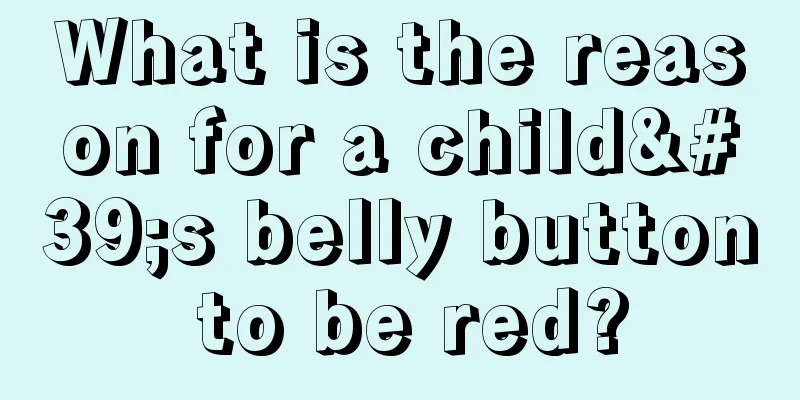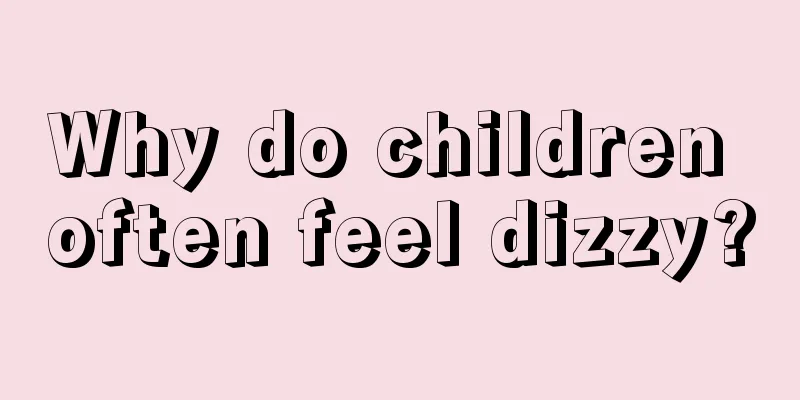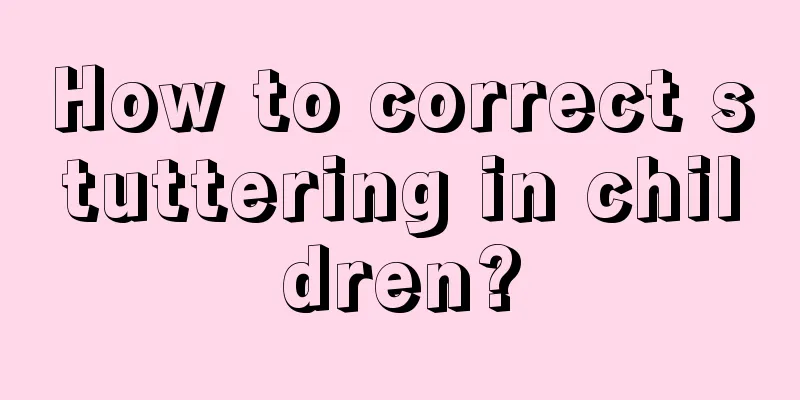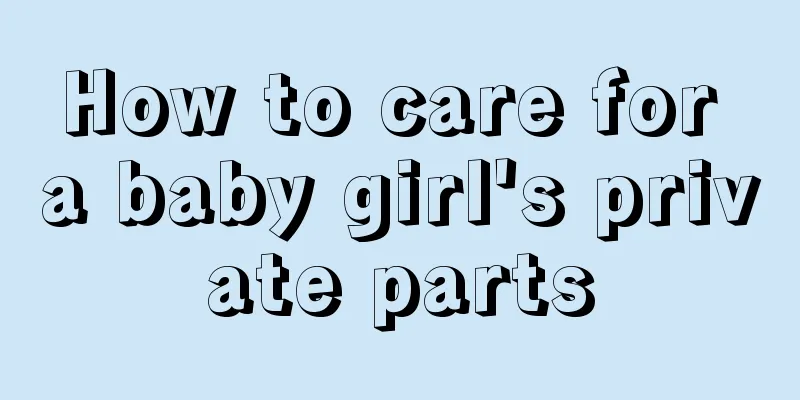What are the main symptoms of rhinitis in children?
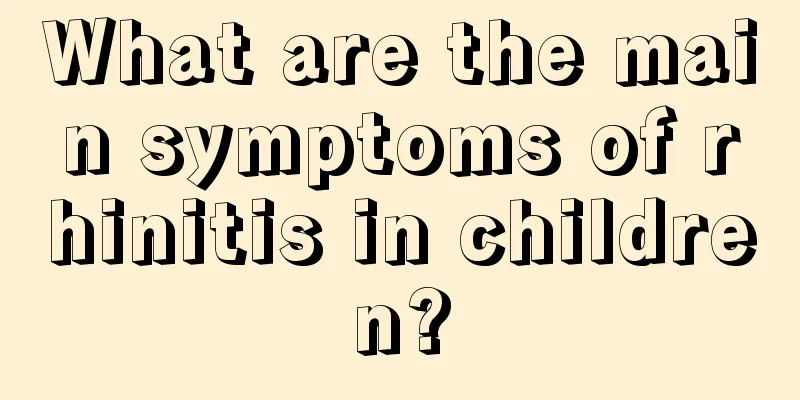
|
If a child develops rhinitis, the most important thing is to find the cause. For example, if it is rhinitis caused by allergies, specific immunotherapy can be done at this time. In addition, if it is rhinitis caused by colds, etc., treatment should be targeted at the specific condition. But in any case, the first thing to do is to avoid allergens, and secondly, targeted desensitization treatment can be done, and some traditional Chinese medicine treatments can also be adopted. 1. Symptoms of rhinitis in children Allergic rhinitis in adults has typical symptoms and signs such as nasal itching, runny nose, and sneezing, which are easy to diagnose. However, the symptoms and signs of allergic rhinitis in children vary greatly and are mostly atypical. Common symptoms of allergic rhinitis in children include: itchy nose (children often rub their noses), alternating nasal congestion (dry and sore throat caused by mouth breathing), sneezing (usually sudden and severe), runny nose (mostly watery, or purulent when infected), nasal congestion (decreased or absent sense of smell), dizziness, headache, stuffy ears, red and itchy eyes, and tearing (dark circles under the eyes are caused by frequent rubbing of the eyes). 2. Characteristics of rhinitis in children 1. Children have low physical resistance and poor ability to adapt to changes in the external environment. They are prone to rhinitis, upper respiratory tract infections, and acute infectious diseases (influenza, measles, whooping cough, etc.). 2. Children's nasal cavity and nasal passages are narrow, their sinuses are underdeveloped, their sinus mucosa is tender and weak, and they are rich in lymphatic vessels and blood vessels. Once infected, the mucosa will swell significantly and secretions will be abundant, which can easily block the nasal passages and sinus openings and cause nasal and sinus ventilation and drainage disorders. 3. Children's sinus openings are relatively large, and infections can easily invade the sinuses through the sinus openings. 4. Diseases adjacent to the nose, such as enlarged tonsils in the pharynx and adenoids in the nasopharynx, as well as congenital cleft palate, affect normal nasal breathing. 5. Children are prone to nasal foreign objects and nasal trauma, which may cause secondary infections. 6. Children with allergic constitution are prone to allergic rhinitis, sinusitis, asthma, etc. 7. If children swim or dive in unclean water, they are more likely to suffer from rhinitis and sinusitis. 8. Children often pick their noses with their fingers, and the mucus irritates the skin of the nasal vestibule, which can easily cause nasal furunculosis and vestibulitis. 3. The hazards of allergic rhinitis in children Hazard 1: Affecting children's normal biological clock. Allergic rhinitis has a fixed season of onset every year. Patients with allergic rhinitis often make faces, scratch their ears, and deliberately open their eyes wide. If this continues for a long time, the quality of sleep will be greatly reduced, leading to disruption of the normal biological clock, and in serious cases it will affect all aspects of physiology. Harm 2: Affecting the child's face. Allergic rhinitis will cause nasal obstruction, and the child must often breathe through the mouth. This will cause the child's maxillary bone to be underdeveloped and the cheekbones to become smaller. Long-term blockage will also cause complications such as bronchial asthma, sinusitis, allergic pharyngitis, etc., affecting the child's face. Hazard three: Inducing other diseases The nasal cavity is the first barrier to human breathing and can effectively resist and filter external viruses. The onset of allergic rhinitis weakens its function, allowing pathogens to enter various organs in the body and cause lesions. Allergic rhinitis also has symptoms such as nasal congestion, runny nose, itchy nose, sneezing, and dark circles under the eyes. If not treated in time, allergic rhinitis will develop to a serious level and will cause many complications, such as sinusitis, otitis media, bronchial asthma, etc. |
<<: How to care for children with facial paralysis? These 3 points must be achieved!
>>: What are the symptoms of rhinitis in children? These manifestations are the most common!
Recommend
Should girls wipe or not after peeing?
In daily life, many girls choose to wipe with toi...
What causes roseola in infantile eczema?
Once you contract roseola infantum, the disease p...
Can children eat pears when they have a cough?
Pears have the effect of clearing away heat and d...
What to do if a child has a cold, cough and phlegm
I believe that all parents know that it is very d...
What are the symptoms of thalassemia in babies?
The disease of thalassemia is somewhat hereditary...
The harm of waist stool to baby
Many things and events have two sides, that is, t...
What is the effect of cephalosporin in children?
Cephalosporin is an antibiotic. Currently, this t...
Why do children urinate frequently at night?
Many children, who are five or six years old, sti...
Misunderstandings about the treatment of green runny nose in babies
Every parent is particularly concerned about the ...
What are the dietary arrangements for nine-month-old babies?
When taking care of a nine-month-old baby, you mu...
Why does a five-month-old baby cry at night?
Many parents go to work with dark circles under t...
What are the symptoms of epilepsy in children?
What people often call epilepsy actually refers t...
Don't worry if your child has bent legs. Correcting them in time will help
It is a very common phenomenon for children to ha...
The child's lower lip suddenly swells
Children are in a critical period of physical dev...
What should I do if my baby doesn't like to eat recently?
Parents all wish that their babies would eat more...

